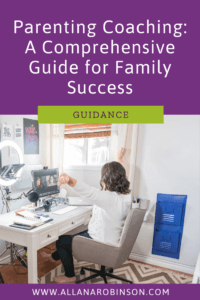Natural and Logical Consequences are a method child guidance (often called a discipline method) that has certain advantages over other methods- such a timeouts:
- They’re connected, make sense, and real. The punishment has to fit the crime- they aren’t made up.
- They’re self-enforcing. After a while, the child learns the true consequence to their actions and learns to generalise.
- They teach restitution and accountability. When you do wrong, you must make up for it.
- They don’t rely on getting caught by an authority figure to be effective.
All this to say- because natural and logical consequences are connected and make sense- they encourage intrinsic motivation. Our kids want to behave well because behaving badly is inconvenient for them. Behaving well becomes the path of least resistance.
What’s the Difference Between Natural and Logical Consequences?
 Let’s start with Natural Consequences:
Let’s start with Natural Consequences:
- Natural Consequences occur without ANY intervention from us or anyone else. They JUST HAPPEN. So a really simple example would be if you refuse to wear your coat outside and it’s -20, you’re going to be bloody cold. Or if you throw your toy across the room, it’s going to break. Cause, meet effect.
- They don’t require much input from an authority figure. Narration or “Sportscasting” can be helpful for helping children who are missing the cause and effect link as long as it remains extremely neutral and doesn’t cross over into shaming or nagging.
When Can Natural Consequences be used?
Natural Consequences can be used in most situations where they occur- however, there are some instances where they’re wildly inappropriate- I call them the 3 Ds:
- It’s dangerous- physical or mental harm will come to the child if you allow it to occur.
- It’s delayed- the consequence will take a long time to occur thus becoming ineffective.
- It’s detached- the consequence will affect people around them, it isn’t isolated to the child.
In these instances, we need to move to a Logical Consequence instead.
Logical Consequences
- Require the input of a caregiver. We have to walk them through the logical consequence steps- it won’t just happen.
- Are directly related to the misbehaviour. The punishment HAS to fit the crime here. If you can’t draw a straight line between the two, it isn’t logical.
- Seek the input of the child when possible. This increases buy-in and often helps the child solve their own problem.
- Are ideally considered in advance by the caregiver- they aren’t angry or reactive. Again, we’re back to neutral as possible.
Ready to be a wizard with words during your kiddo's next tantrum tornado? Sign up for our 'Parenting Power Phrases' mini-course! This magic scroll of wisdom will equip you with the perfect phrases to tame those baffling behaviors from your toddler, preschooler, or kindergartener. Be prepared, be confident, and ace the next curveball your little one throws your way!
The steps to implementing a Logical consequence

1: Give an overview of where things stand by using a declarative statement. If the child complies- great! You’re done. If not, continue.
2: Ask for the child’s input in the form of a problem-solving question. If the child comes up with an acceptable answer and follows it through- great! You’re done. If not, continue.
3: Provide the appropriate answer and give controlled choices. If the child chooses one of the offered options- great! You’re done. If not, continue.
4: Choose for them and follow through. This step here is the Logical Consequence!
So let’s run through a quick example of Natural and Logical consequences:
You and your three year old are waiting in the dentist’s office for your appointment. It’s not an environment set up for children- there’s lots of breakable tchotchkes and decorative items around. Your child keeps touching these things, despite your repeated directions not to and attempts to engage them otherwise.
The Natural and Logical Consequences:
The Natural Consequence in this situation would be that one of the decorative items gets broken. This doesn’t pass the 3D check: it has fallout for someone other than the child. So we need to move on to a logical consequence sequence. So we’d follow our Logical Consequence process:
Declarative statement: “You’re touching the decorations. I’ve asked you to stop.”
Question: “What can you do instead of touching the decorations?”
Answer & Choices: “You can look at a magazine, or you can come hold my hand.”
Choose for them and follow through: “You’re telling me that you’re choosing to come hold my hand.” <- Logical Consequence.
Now, at any point in between each step your child may give their input and comply. You only need to move on to the next step in the process if you continue to observe the behaviour.
Are natural and logical consequences making more sense now? Let me know in the comments or come join us in the Parenting Posse!
Sources:
Bailey, S. J. (2009). Discipline: A parent’s guide for school-age children. Bozeman, MT: Montana State University Extension.
Gutierrez, E. (2012, April 26). Natural and logical consequences: How implementing them leads to better discipline in children. East Lansing, MI: Michigan State University Extension.
Steinberg, L. (2004). The Ten Basic Principles of Good Parenting. New York, NY: Simon & Schuster.
University of Minnesota Extension. (1995). Positive parenting I: A video-based parent education curriculum. St. Paul, MN: University of Minnesota Extension. This product is no longer available.
Coloroso, B. (1995). Kids are Worth It! Giving Your Child the Gift of Inner Discipline. Toronto, ON: Sommerville House
Gonzalez-Mena, J. (2002) The Child in the Family and Community (3rd ed.) Upper Saddle River, NJ: Merrill Prentice Hall.














3 thoughts on “An Introduction To Natural and Logical Consequences”
Pingback: Don’t Ask, Tell |
Pingback: Early Childhood Theorists: John Dewey | Allana Robinson
Pingback: Hitting, Biting, Kicking: Dealing with Aggression - Uncommon Sense Parenting with Allana Robinson